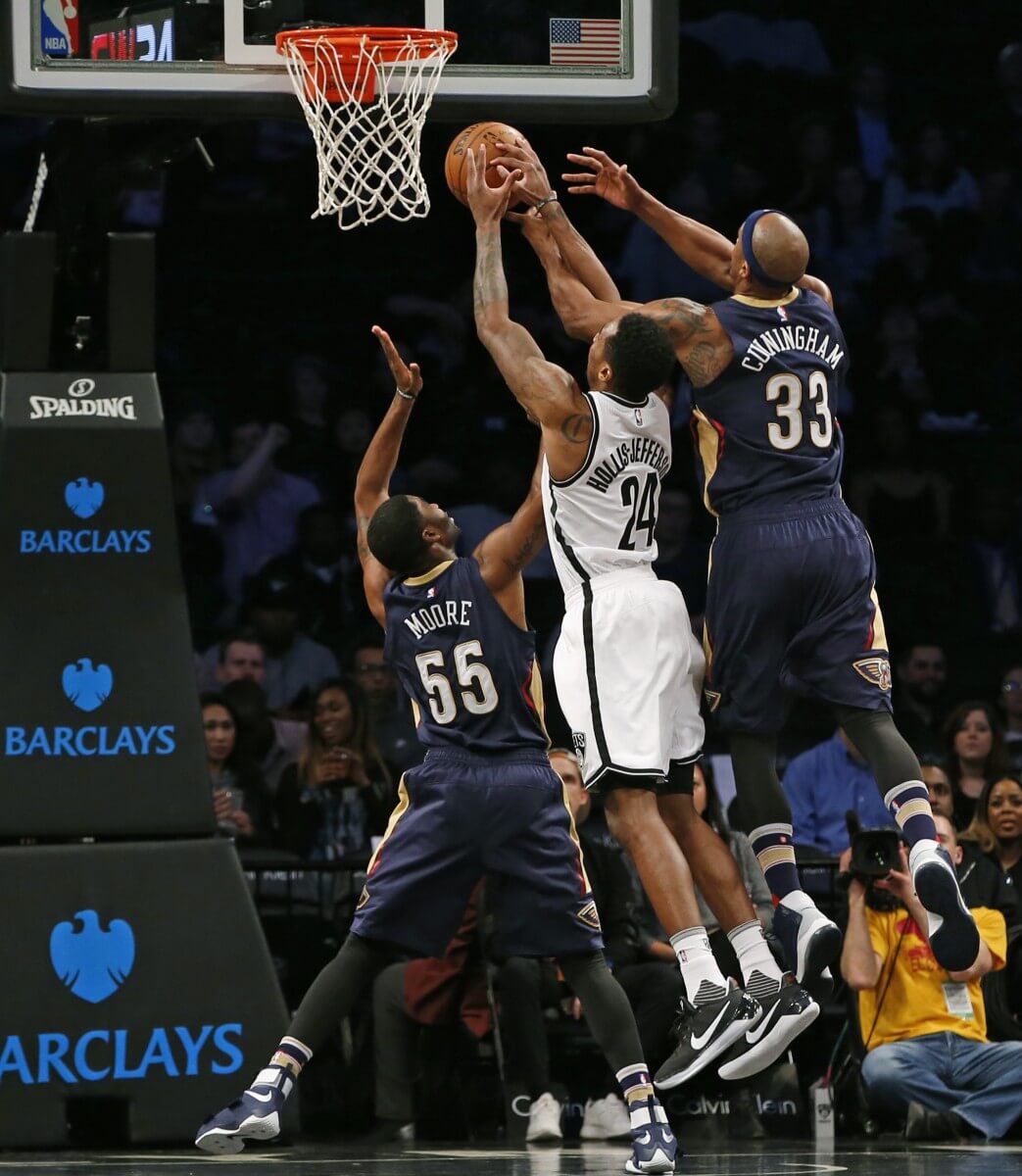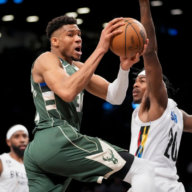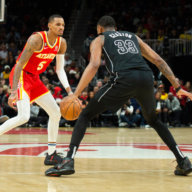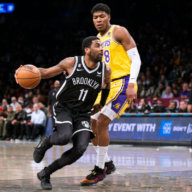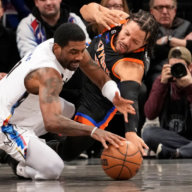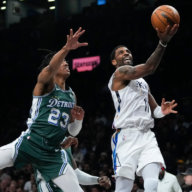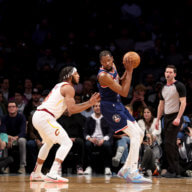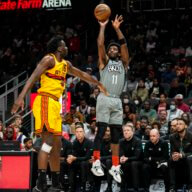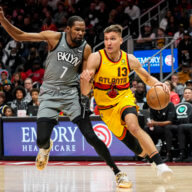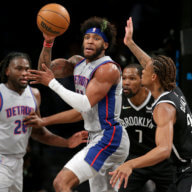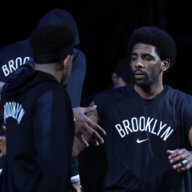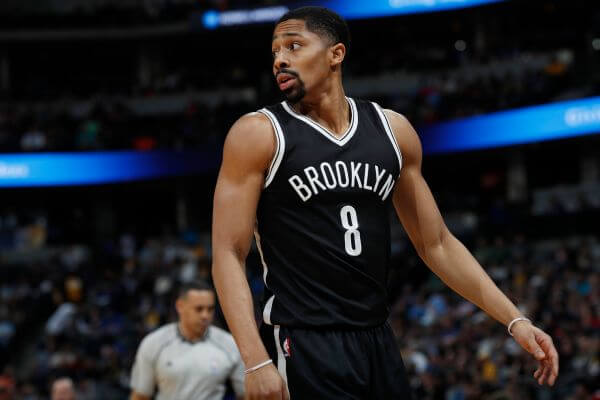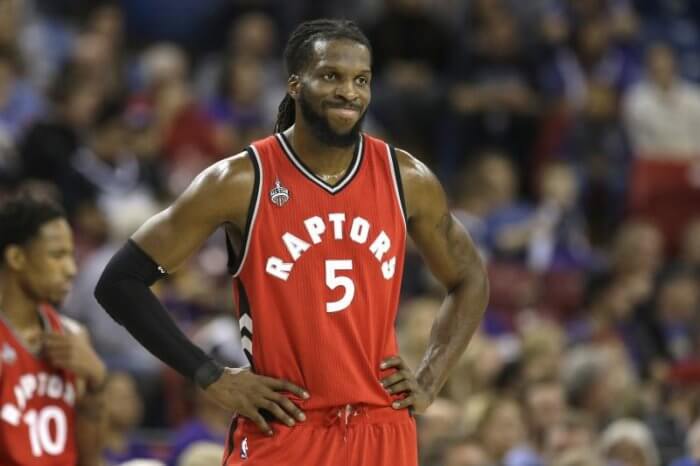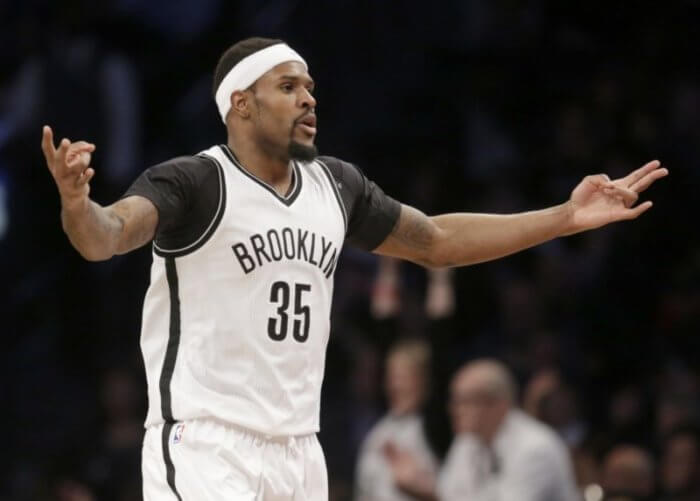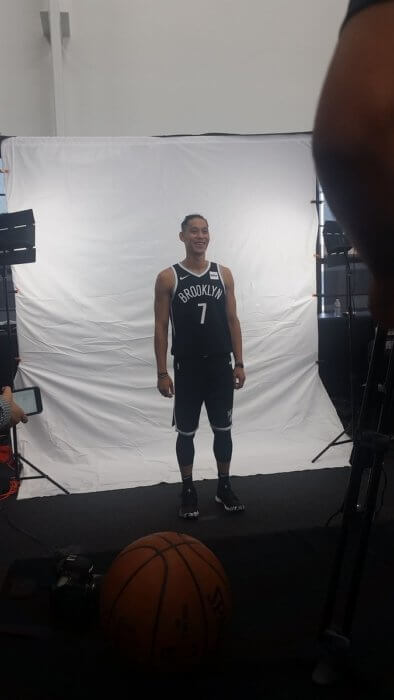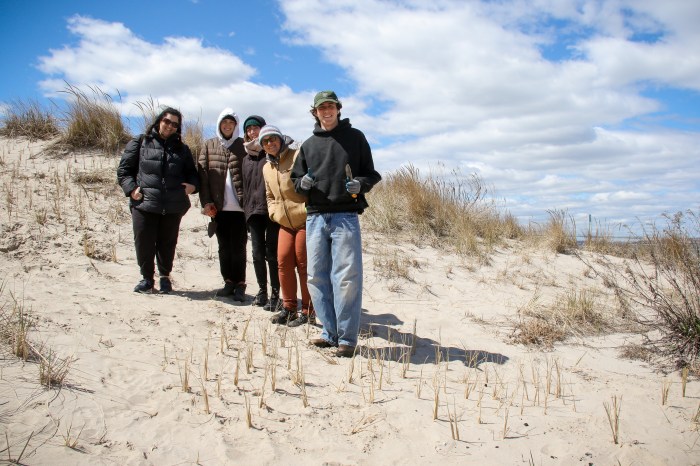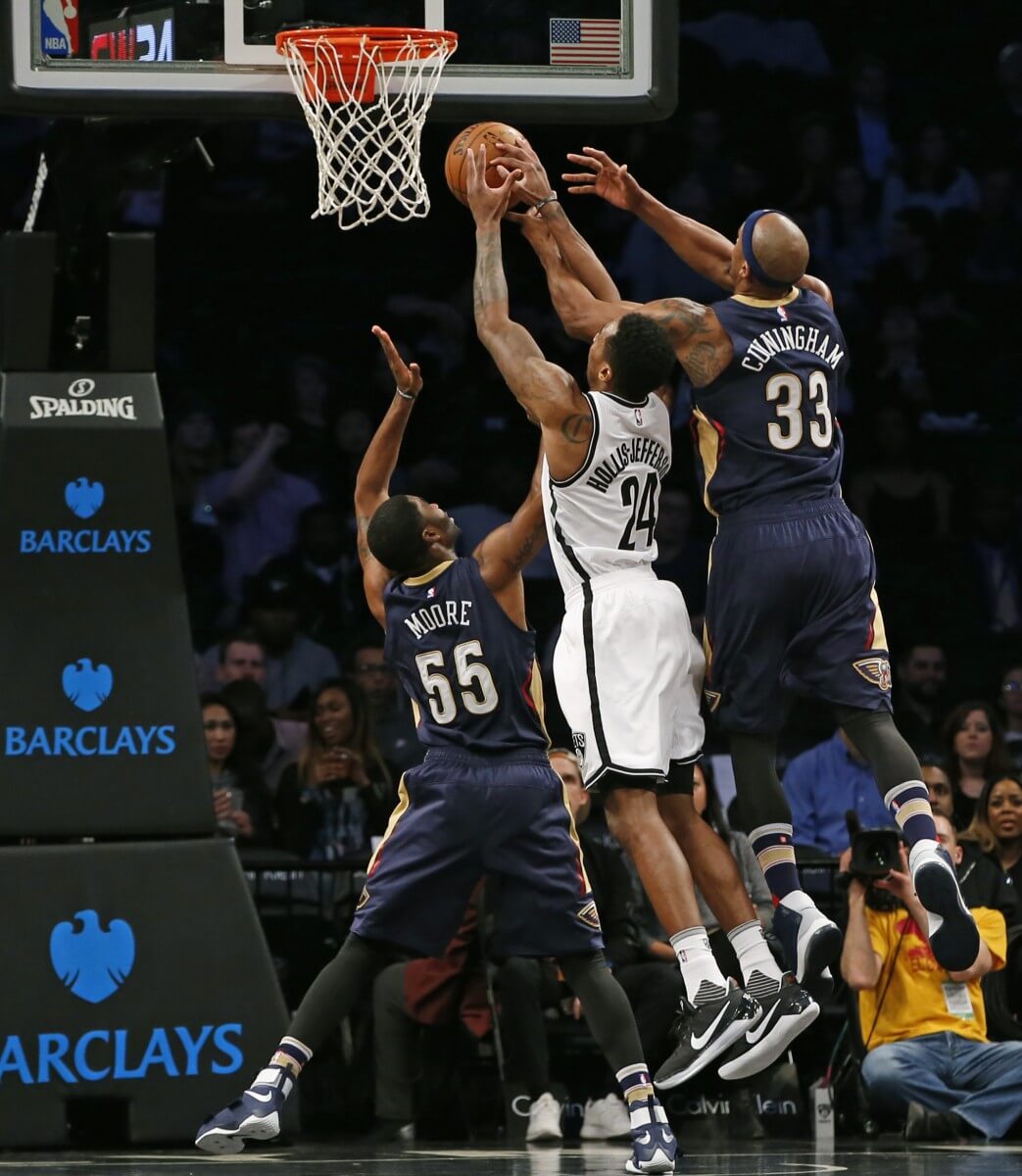
Rondae Hollis-Jefferson, Power Forward/Small Forward/Shooting Guard
2016-17: 22.6 MPG, 8.7 PPG, .434 FG%, .224 3P%, 5.8 RPG, 2.0 APG, 1.1 SPG, 0.6 BPG, 78 G
Who is Rondae Hollis-Jefferson?
There are a few ways to describe Rondae Hollis-Jefferson: 22-year-old, third-year player out of the University of Arizona, The Hyphen, the longest-tenured Net, starting power forward?
Hollis-Jefferson is the last player left from the Billy King era and was basically the first player for the Nets that represented the start of the youth movement since the trade that must not be named. Even though he is coming into only his third season as a professional in the NBA, he already could be looked upon as a Brooklyn veteran comparatively in terms of Nets experience. This is given that Lopez was finally traded in what seemed like five years in the making.
Taken with the No. 23 pick in the 2015 draft, RHJ has been somewhat pigeonholed fairly or unfairly as an extremely reliable defender who struggles with his shot. When defining Hollis-Jefferson and trying to describe who he is, the hope would be that we actually still do not know, at least completely. In his rookie year, there were comparisons made of him to Michael Kidd-Gilchrist, but as we enter the 2017-18 season, positive expectations are that he is set to move past that ceiling, at least offensively.
RHJ divides fan opinion on how he fits into the Nets team moving forward, but looking at him purely as a basketball talent, he has the skill set to fit into at Kenny Atkinson-run offense, even if he was not brought in by the current regime. This, together with his contract and age, is one of the reasons why he is still a Brooklyn Net, but there is still a lot of optimism in his role. He by all accounts is a very high character guy, which means a lot for a team preaching culture. This year is a very important season in finding out who he actually is.
2016-17 Recap
Purely statistically, Hollis-Jefferson probably did not have the second-year season that he hoped for. He was slightly inconsistent, and while he did increase his scoring from 5.8 to 8.7 PPG, this did come mostly from an increase in FGA’s. Otherwise, basically, all counting stats remained fairly steady, and maybe most glaring was that his minutes per game only rose by 1.4 to 22.6, despite starting 50 games.
Not all of this was The Hyphen’s fault. We try to forget, but the Nets fell short of expectations last season, which is a nice way to say that they were bad. His role and positioning were experimented with throughout the season, and while he will be better for it in the future it can take some time as he evolves as a player and learns from his mistakes. Originally he was being played (if only a once off thing) as a point guard in Summer League, before going back to small forward where he seemed more suited, and lastly transitioning to power forward at the end of the year. This does have an impact on his comfortability within himself and his role, but what it also shows is that his flexibility is a huge asset. Of course, in the way the modern game is now being played, the coaching staff will preach ‘position-less basketball,’ and getting caught up on his exact place in the line up may not matter as much as we think it does. The key thing is that he can be plugged into a variety of Atkinson lineups.
Hollis-Jefferson, though, did nothing in 2016-17 to make me think he cannot be a very good NBA player. What he showed in his second year was his capacity to learn and grow and an ability to guard almost all positions. This makes him invaluable on the Nets with a very wing-heavy roster. We saw multiple sides of his repertoire on the offensive end, especially in the two games where he put up a current career-high 20 points. While his shot needs work, especially from three-point range if he is to become a threat (only 22.4 percent on 67 attempts), he was able to convert at 58.4 percent when he got to the rim. As soon as he distanced himself at further than three feet, though, his percentages plummetted across the board. The fact that he has the capacity to create his own shot and his pure effort should translate into better looks, especially with players like D’Angelo Russell and Allen Crabbe spacing the floor.
https://www.youtube.com/watch?v=0WL-SHYRfv8
Last year was a learning season, frustrating at times for Nets fans and fantasy coaches alike, but when Hollis-Jefferson’s shot is not falling, his ability to remain active on defense and rebound at an impressive rate (5.8 per game in his limited minutes) shows promise going forward. He is able to telegraph passes, and while he sometimes wants to go cheat on defense for the steal, he is quick enough moving laterally to recover.
What does he bring to the table?
What he brings on defense is what comes to mind first. In saying this, what else Hollis-Jefferson adds for the Nets goes beyond just his positional fit and energy.
RHJ has the ability to break down defenders with a quick first step. While he does need to work on having soft hands at the rim and finishing with contact, what he seems to give the Nets is what I like to call the ‘miss assist’. It is not an ideal scenario or something you would work on, but Rondae is able to routinely either blow past his defender or cut to the basket with proficiency, becoming open and thus demanding defensive rotations. Time and time again we saw Hollis-Jefferson squeezing shots off whilst being pressured by multiple defenders and quite often throwing up low percentage shots that were finished by Brook Lopez or Trevor Booker. The opposite side of the coin is obvious, with low percentage shots leading to easy defensive rebounds and often fast break opportunities for the opposing side. He needs to take advantage of his athleticism and finish these plays and be more of a scoring threat, especially if he is going to routinely be matched up against bigger bodies at the power forward spot.
This leads to his decision making. The Hyphen has shown a knack for being able to read the play and make those around him better with his passing. Yet, he has a tendency to go for a Hail Mary play and needs to better be dictated by what the defense gives him. Brook-lin.com does a good job in the video below showing examples of both from last season.
The Bottom Line
It’s a big year for both the Brooklyn Nets and Hollis-Jefferson. In a similar vein in terms of the team priority not being entirely on wins and losses, with RHJ it is less about statistics and more about growth and finding his identity within the team moving forward. Atkinson has mentioned that at least for the beginning of the season he will start at the power forward position, and there have also been rumblings of a ‘long-ball’ five with RHJ sliding over to center. This is good news for him, that he has at least earned the trust of the coaching staff and shows promise where the Nets think they can be competitive in a number of scenarios with him on the floor.
RHJ needs to prove he belongs. He needs to piece it all together and become a more rounded player with an offensive weapon he can go to, and maybe, more importantly, one that defenses can respect. This will open multiple doors for him to impact the game if in lineups featuring floor spaces like Russell, Jeremy Lin, Crabbe and Caris LeVert, whether it is a mid-range shot or a better ability to finish softly over defenders.
We have already seen Hollis-Jefferson match up against Kristaps Porzingis in pre-season, and we will continue to see plenty of these matchups moving forward, with probably varying levels of success. There’s excitement to see how it unfolds and high hopes for what RHJ can do, not only for this year but for a long career with the Nets.
The Brooklyn Game Player Previews:

